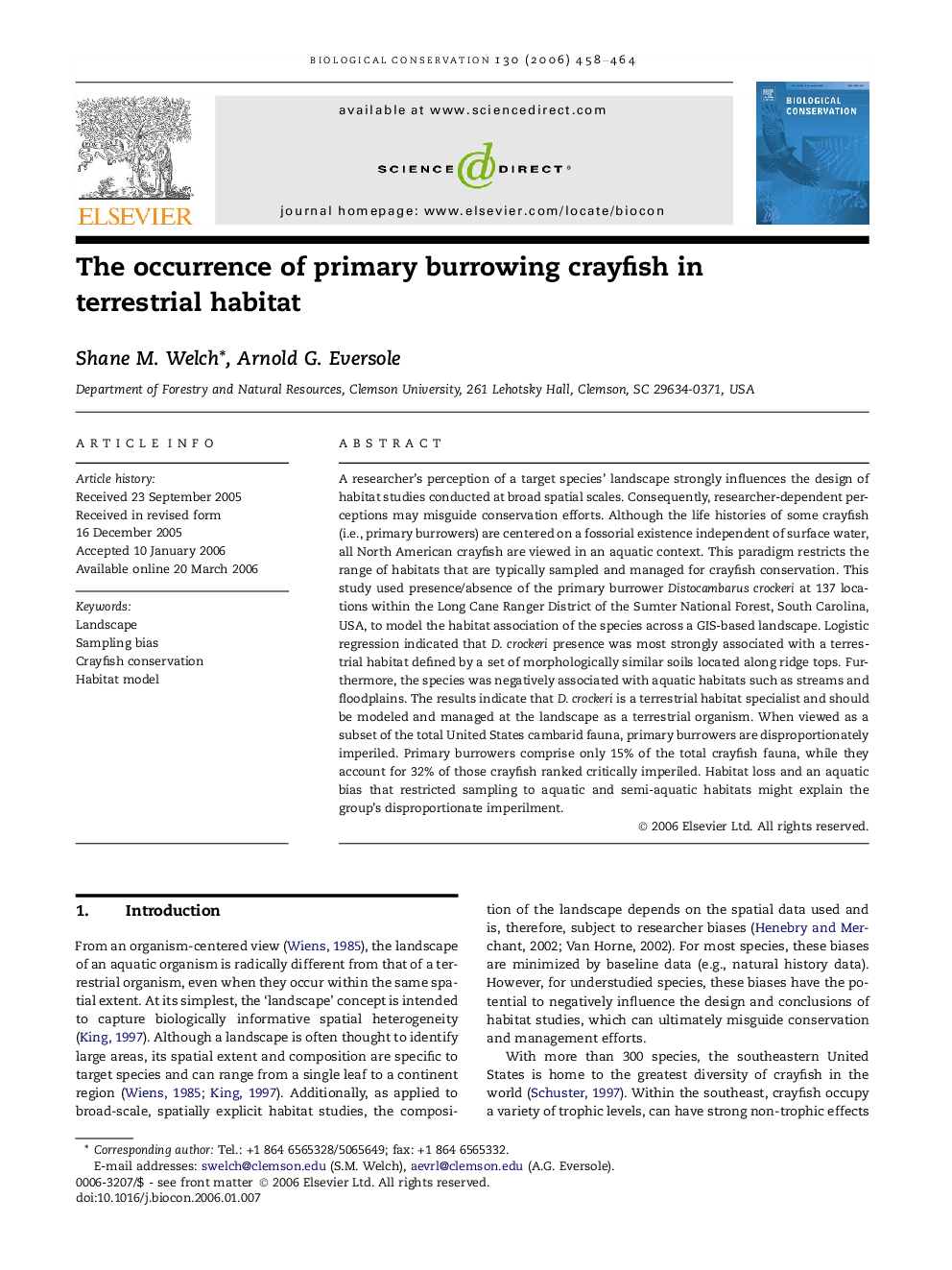| Article ID | Journal | Published Year | Pages | File Type |
|---|---|---|---|---|
| 4387694 | Biological Conservation | 2006 | 7 Pages |
A researcher’s perception of a target species’ landscape strongly influences the design of habitat studies conducted at broad spatial scales. Consequently, researcher-dependent perceptions may misguide conservation efforts. Although the life histories of some crayfish (i.e., primary burrowers) are centered on a fossorial existence independent of surface water, all North American crayfish are viewed in an aquatic context. This paradigm restricts the range of habitats that are typically sampled and managed for crayfish conservation. This study used presence/absence of the primary burrower Distocambarus crockeri at 137 locations within the Long Cane Ranger District of the Sumter National Forest, South Carolina, USA, to model the habitat association of the species across a GIS-based landscape. Logistic regression indicated that D. crockeri presence was most strongly associated with a terrestrial habitat defined by a set of morphologically similar soils located along ridge tops. Furthermore, the species was negatively associated with aquatic habitats such as streams and floodplains. The results indicate that D. crockeri is a terrestrial habitat specialist and should be modeled and managed at the landscape as a terrestrial organism. When viewed as a subset of the total United States cambarid fauna, primary burrowers are disproportionately imperiled. Primary burrowers comprise only 15% of the total crayfish fauna, while they account for 32% of those crayfish ranked critically imperiled. Habitat loss and an aquatic bias that restricted sampling to aquatic and semi-aquatic habitats might explain the group’s disproportionate imperilment.
